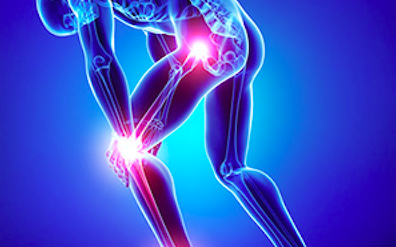Treating Arthritis Pain
Physical therapies, assistive and electric devices and mobility aids can help you to break your pain chain.

Physical Therapy
A physical therapist can help you improve mobility, restore the use of affected joints, increase muscle strength to support joints, reduce pain, and maintain flexibility and your ability to perform daily activities. A successful outcome depends on you learning specific exercises from a physical therapist and practicing them at home. Improvement is gradual, so ongoing practice is essential.
Occupational Therapy
Occupational therapists are specialists who help people participate in the things they want and need to do. They can help you adapt your environment to fit your needs by suggesting assistive devices and teaching you how to use them or by showing you ways to do things with less pain. Some examples of tasks they can help you with include opening jars, carrying groceries, doing laundry, turning doorknobs and getting in and out of the car.
Braces, Splints and Assistive Devices
Braces and splints can be fitted by physical therapists, occupational therapists or orthotists to align and support your joints. They can protect your joints from damage and ease pain. Other mobility and assistive devices available to help with daily life and to protect your joints include canes, walkers, reachers and grabbers, button hooks, jar openers, lever door handles, etc.
Chiropractic Care
Chiropractic care focuses on treating and preventing musculoskeletal conditions and their effects on the nervous system and general health. Chiropractors use physical manipulation, ultrasound, trigger point therapy and stretches to help keep the body aligned and provide pain relief. A chiropractic adjustment involves using the hands or a device to apply a controlled, rapid force to a joint to increase the range and quality of motion in the area being treated. Make sure to find a licensed chiropractor who has experience in treating people with arthritis.
Osteopathic Medicine
Osteopathy is based on the belief that most diseases are related to problems in the musculoskeletal system, and that structure and function of the body are related. Osteopathic manipulation is a gentle technique that involves using pressure and resistance to work with muscles, connective tissues and joints to relieve pain, restore motion and support the body’s structures. Make sure the osteopath you choose has received formal training at an accredited osteopathic medical school.
Electrical Stimulation Devices
Transcutaneous electrical nerve stimulation (TENS) units and interferential current stimulation (ICS) units use pads placed on your skin to stimulate nerves and muscles around the area of pain. In spinal cord stimulation, a small device is implanted under the skin to deliver mild electrical signals to an area near the spine, relieving pain.
